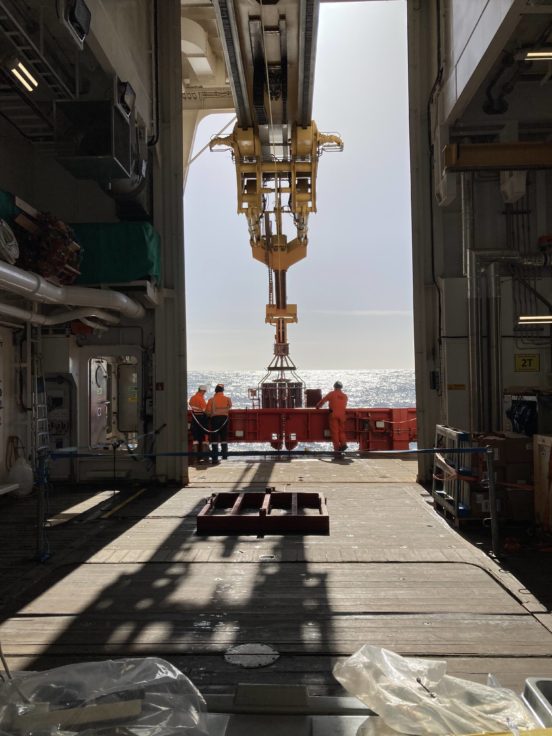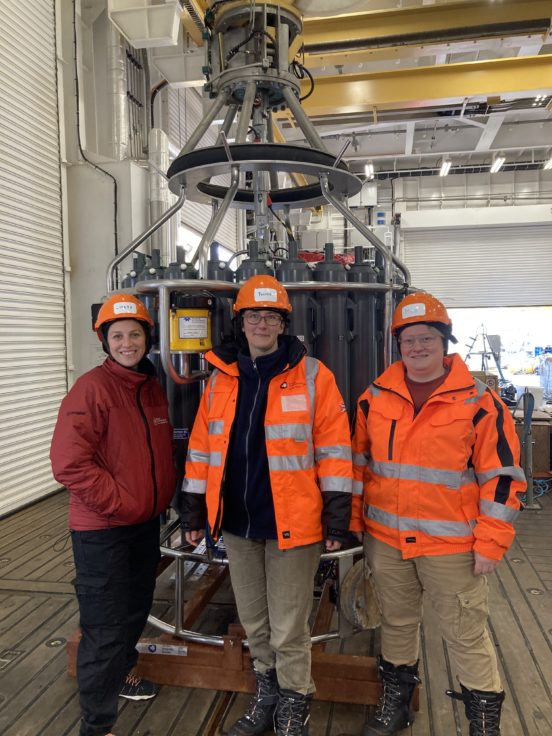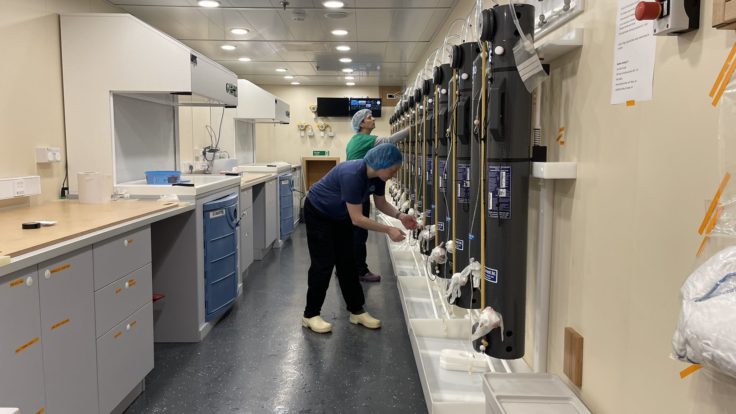Science Trials on the RRS Sir David Attenborough add to historic dataset
22 February, 2023 RRS Sir David Attenborough, science
Last week, the team aboard the RRS Sir David Attenborough produced the first significant scientific data set with the ship’s oceanography equipment – a significant milestone in the life of the new research vessel.
They completed a hydrographic section across Drake Passage, the notorious stretch of the Southern Ocean that lies between South America and the Antarctic Peninsula. This work was part of the Science Trials being undertaking in the Southern Ocean and Antarctic waters to test the full capabilities of the vessel for the first time.
“This Southern Hemisphere summer marks the 30th year of the Drake Passage annual repeat sampling time series,” reflected Yvonne Firing, a researcher at the National Oceanography Centre and the physical oceanography lead on this cruise. “To have it be the first Antarctic science on the RRS Sir David Attenborough made it even more special. It was a neat way to connect this new ship to the long tradition of ocean observing and the work done over the years by many scientists and crews.”
The Drake Passage is the most comprehensively observed part of the Southern Ocean. It provides the link between the Pacific and Atlantic Oceans, and it constricts the world’s largest ocean current, Antarctic Circumpolar Current (ACC) to a narrow geographical region. The sampling captures data from the sea surface to the seafloor, and from the edge of one continental shelf right across to the other. This allows tracking of transports of heat, salt, carbon and nutrients in the ACC, and study the physical and biogeochemical processes that shape Southern Ocean ecosystems and influence climate worldwide. By repeating these measurements year after year, we can monitor changes and link them to influences from or on the atmosphere, the Antarctic ice, and the rest of the ocean basins.

Drake Passage is famously rough sailing, being a convergence point of waves, wind and currents. “It is my first ever visit to Antarctica and working in the Drake Passage,” said Isabel Seguro, an oceanographer from the University of East Anglia. “Whilst I have loved the experience, I have found the rough seas and finding my sea-legs challenging!”
For Milo Bischof, a PhD student at the University of Edinburgh and BAS, the cruise is a new perspective on their previous study of interactions between sea ice and oceans. “I am learning so much about how the data I work with every day are generated in the field, and how much work goes into getting these important measurements,” he said. “I also love learning about the work everyone else is doing, such as fishing to study pelagic ecosystems, or analysing water samples for tiny amounts of trace metals like iron.”
Yvonne, Isabel and Milo were members of the team who took the measurements. The aim of the Science Trials was to test use of the full range of the RRS Sir David Attenborough’s capabilities, in concert. They used a range of instruments, both mounted in the ship’s hull and lowered from the ship on a wire, as well as the laboratory facilities on board, we can measure ocean properties.

“There are expected challenges in a trials cruise,” pointed out Yvonne, “so it is satisfying to know we have not only successfully made our own measurements but also contributed to future observations by developing the ship’s capabilities and the quality of data collected.”
The extreme conditions of the Southern Ocean also pose challenges to any scientist working in the field. “Working in freezing water is very different to my previous work around the UK, tropics and the Atlantic Ocean,” said Isabel, who specialises in sampling for oxygen data. “I have had to adapt my methods as I went along. Sampling is more complicated, even just because of having to wear many extra layers of clothing.”

For Isabel and Milo, the Science Trials were also their first time going South. “Life on board the RRS Sir David Attenborough is very busy and exciting,” said Milo. “It has been amazing seeing first glimpses of the region I spent the last two years studying. Everyone on board is really friendly and easy to talk to, and I have been really impressed with how much care goes into making sure everyone is having a good time.”
“It has been great to see this expedition coming together through the collaborative efforts of the ship’s personnel, technical staff, and scientists across disciplines and institutions,” Yvonne concluded.
The RRS Sir David Attenborough Science Trials cruise continues into March 2023, with further capability testing and potential for science outcomes as they navigate into Antarctic waters. The progress of the vessel and the Science Trials can be tracked here.
Yvonne Firing is a researcher at the National Oceanography Centre and physical oceanography lead on this cruise.
Milo Bischof is a PhD student at the University of Edinburgh, where he researches interactions between sea ice and the ocean. On the Polar Science Trials he is involved in the physics team, helping to collect and quality-control data on parameters including profiles of ocean currents and temperature, salinity and oxygen.
Isabel Seguro is an oceanographer studying primary production and respiration (from microscopic plankton and bacteria) in the ocean using oxygen measurements. Her role on the expedition is to ensure that all the electronic oxygen sensors on the ship and CTDs (devices for taking measurements and collecting water from the ocean) are working correctly by comparing their outputs to her laboratory results from water samples.